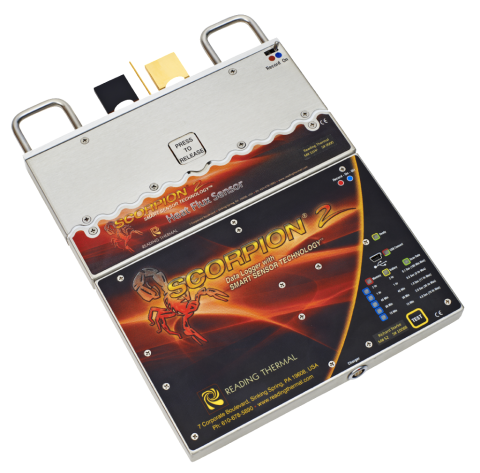Baking ovens, batch ovens, conveyor ovens, curing ovens – the wide variety of industrial ovens used across multiple industries can all be grouped under one common term: heat transfer ovens. These ovens are critical components of various production processes, from baking delicious pastries and breads to curing metals and composites. What’s unanimously true is that monitoring heat transfer in industrial ovens is critical in ensuring consistent product quality and optimized production rates.
Several factors can affect the heat transfer efficiency of an industrial oven, including variations in oven temperature, changes in oven chamber size, variations in product load size and shape, and issues with ambient temperature and humidity. These factors can impact heat transfer, affecting product quality and production efficiency. To ensure consistent oven operation and optimal results, continuously monitoring heat transfer during industrial production is essential. Reading Thermal’s array of Smart Sensors and Data Loggers provide real-time monitoring of oven temperature, air flow rate, and process load size to help ensure that heat transfer is consistent across all industrial ovens.
What Are Industrial Ovens Used For?
Industrial ovens use high temperatures to process raw materials in various applications, from food production to chemical processing. Due to the critical nature of heat transfer, it’s essential to monitor and optimize the process continuously. Even the slightest change in variables can result in massive losses in product quality and integrity, impacting the efficiency of workplace productivity while creating inconsistency in your production process. A lack of adequate monitoring means that these shifts in conditions and environments can go unnoticed until it’s too late.
Effectively Monitoring the Heat Transfer Process
Whether working with metals, electronics, or food, controlling even the most minute factors of your baking processes is crucial for your products’ consistent and high-quality production. Every product has its unique specifications for how much heat can be applied at what point for optimal results. Deviation could mean that:
- Food will be unsafe for consumption
- Moisture won’t be removed
- Paint won’t bond to metals
- Metals won’t bond
- Contaminants won’t be removed
- And so on.
These factors could lead to lower product quality, diminished brand reputation, and reduced revenue. In the case of baked goods and food production, the SCORPION® 2 Heat Flux Sensor provides real-time insights and analytics with intuitive graphs and data reports to keep your teams informed of your oven profiles. An accurate profile of your oven variables will prevent any sudden changes from detracting from the overall quality of your products, given that they can be controlled, remediated, and monitored at any step in the process.
Why Is Heat Transfer Monitoring Important?
Several factors can impact the efficiency and accuracy of heat transfer in industrial ovens, including ambient temperature or humidity fluctuations. By monitoring heat transfer during production processes, operators can detect potential issues early on and make any necessary adjustments to optimize their oven performance. Some key benefits of heat transfer monitoring include the following:
- Consistent product quality across all batches
- Optimized production rates and improved operational efficiency
- A safe working environment for operators and employees
Commercial bakeries that use industrial ovens need to ensure they’re proactively monitoring heat transfer in their industrial ovens. Call us at (610) 678-5890 Ext. 2, or contact us online for more details about our innovative products.

